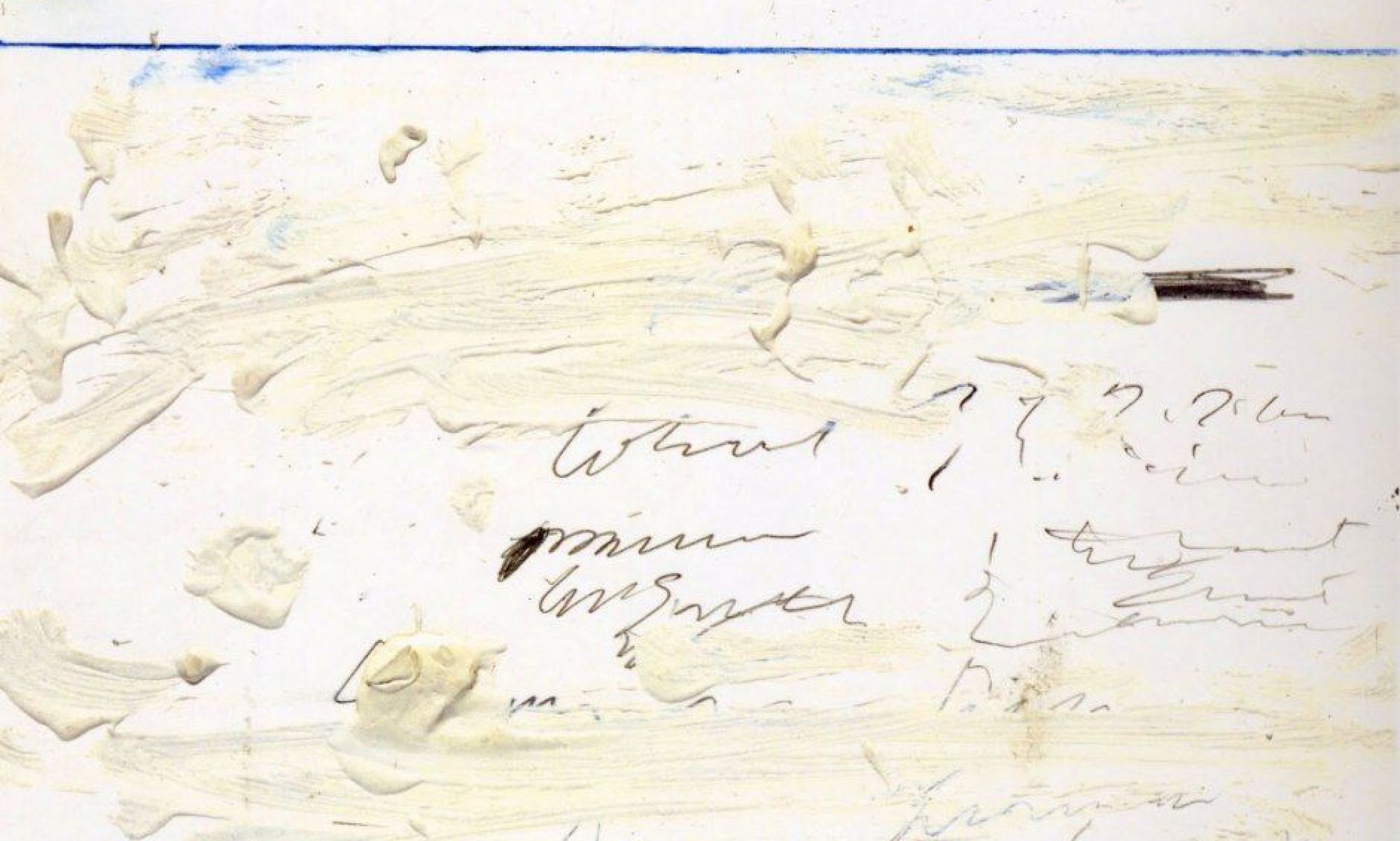We began with an exercise—identifying the rhythms in the room, sitting quietly for a minute to begin to sense them. John talked about somatic rhythms, breathing and pulse, especially the pulse felt when you bring your hands together to touch (feeling the inside from outside?—but from both sides). Zoe and Selena both mentioned the mechanical rhythms in the room, definitely the clock, and the tease of the whirring Opticlean (did it ever settle into a regular period?). Cassie pointed to all the visual repetition in the room, in the carpet and the wainscoting, the regular placement of the lights on the ceiling. How much of our environment, acoustic and visual, is structured by rhythm! And how much of our being at ease there depends on such structures. We tried making rhythm ourselves, clapping until we found ourselves in unison (which we could do surprisingly quickly). John wondered if the room wasn’t following me, the teacher; but no, when we tried it again, minus me, consensus came quickly again.
Next we did a little recitation, trying to speak in unison some lines from Sternhold and Hopkins, then Yeats, then Dickinson; progressively more difficult, but still the four-beat rhythm of the tetrameter made it pretty easy to synchronize our voices. This is attributable to the relatively strict ISOCHRONY, or even timing of stressed syllables, in tetrameter; it was a little trickier (though we still did pretty well) with pentameter. Rough isochrony is a property of ordinary spoken language, especially in cases of urgency (where did you put the butter knife!). Verse organizes this general tendency into recognizable patterns, makes it conscious and amenable to figuration.
Next we brought these observations into relation with the selections of Abraham and Blasing for the day: Abraham’s sense that to fall into an external rhythm is to experience yourself as half-creator of it; Blasing’s challenging argument for the substitutability of rhythm, intention, and the I. Pat wondered how to reconcile Abraham’s sense of the convergences of rhythm with Blasing’s openness to rhythm as idiosyncrasy, even as personal style. We talked a little bit about how poetic rhythm moves between poles of (on the one hand) collective, ritualized, participatory rhythm, and (on the other) expressive, idiosyncratic, individual rhythm. Tetrameter tends toward the first, pentameter toward the second. I suspect we’ll return more than once to this spectrum.
From there, we worked through some examples of scansion, lingering over a few cases where the placement of stress was ambiguous. A few notions that emerged: the METRICAL CONTRACT, or the expectation of regularity that a poem establishes in its opening lines; and the practical COMPROMISE involved in scanning a line, judging when to defer to the expectation of meter, when to allow a line to assert a variation. Also the difference between METER (the expectation) and RHYTHM (the actuality). The pentameter line is generally more tolerant of variation than the tetrameter, as Frost’s “Loud, a mid-summer and a mid-wood bird” demonstrated.
We finished off by thinking a bit about rhetorical scheme, patterns such as chiasmus and isocolon. Here, as in meter, we are concerned with something like the spatial arrangement of words—a structure laid out on the page. Both metrical and rhetorical schemes can be made meaningful, which is to say, troped—more on that next time. As we consider the ways in which these structures (at different scales, appealing to ear and eye variously) operate within poems and, analogously, in other arts, we’ll want to keep in mind some of the basic lessons of the phenomenology of rhythm: the way it makes the world habitable (gives pleasure, keeps us alive, etc.); the way it can gather us together (in relatively simple, collective rhythms), and also allow us to distinguish and express ourselves (in rhythms more varied, unexpected, testing the limits of the beat).
